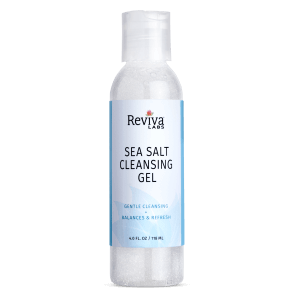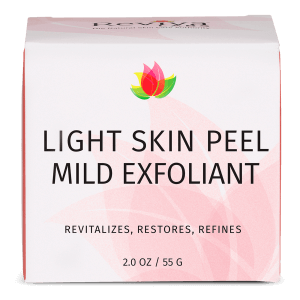Clean Beauty, Reviva Labs, Skin Care
What is a Closed Comedone and How to Prevent Them
Closed comedones, commonly known as a “closed pimple” or “non-blackhead blemish”, i.e., a “whitehead” covered by skin, is an acne lesion that appears as a small, hard bump on the skin. They appear mostly on the face and neck but can also appear in other areas of the body. They are more common among those with lighter skin. Although not nearly as visible as larger, open pores known as blackheads, closed comedos can still be quite irritating and annoying to deal with daily.
What Causes Closed Comedones?
Unlike open comedones, where the clogged pore allows the sebum build-up to reach the surface, where it oxidizes and turns black – a closed comedone is essentially an “acne whitehead pimple” that remains covered by skin. Closed comedones occur due to a buildup of sebum in the pores. Sebum is an oily substance produced by our skin to keep it and hair follicles hydrated and protected. However, when our pores become clogged with dead skin and other debris, they are unable to release the sebum and the excess oil builds up inside of them.
How do you know if you have them?
They often start as red bumps that feel like tiny pimples that are almost unnoticeable. Avoid your first instinct and keep your hands off your face. And don’t try to pop a closed comedone – the skin covering the clogged pore will likely force the infected material inwards instead of popping. Or you’ll apply too much force, causing bruising, potential scarring, and you’ll still likely “spread” the pimple material inward and across your skin – leading to more problems.

Tips to Get Rid of Closed Comedones
There are steps to help heal these tiny bumps, but keep in mind, these stubborn closed comedones and will take longer to deal with than clogged pores that erupt to the surface. The first thing to do is to make sure you keep your face clean! This means washing it twice a day and using a face wash that is meant for acne prone skin. Using a face wash with glycolic acid or salicylic acid can help keep your pores clean and unclogged.
Then move on to exfoliation. Exfoliating is important for many reasons, but it’s especially important when it comes to problematic skin. Exfoliating helps reduce or remove closed comedones on your face by removing the dead surface cells that cover the clogged pore. Plus, it helps prevent new ones from forming by sloughing away dead cells that might accumulate and lead to other clogged pores. It’s a good idea to use a facial scrub with small grains or a chemical exfoliant that is meant for acne prone skin. Exfoliating masks often contain clays that will also draw out oils and impurities that can cause clogged pores. Or you can opt for leave-on chemical exfoliators that will break-up the keratin bonds in the stratum corneum to gently exfoliate overnight or every day.
Treat truly stubborn comedones with topical treatments that contain benzoyl peroxide or retinoids. Optionally, you can apply warm compresses to the skin to help encourage the closed comedone to breakthrough. You can also apply a colloidal patch. Compresses and patches will likely help reduce the skin inflammation and allow the comedone to open – which will make treatment easier and quicker.
How to Prevent Closed Comedones from Coming Back
The good news is once you rid yourself of closed comedones, they’re less likely to return. Especially if you maintain a good preventative skin care routine. By continuing to keep your skin clean and exfoliating on a regular basis you’ll avoid the buildup of dead skin cells and sebum that triggered prior closed comedones.
Glycolic acid cleansers and creams can chemically exfoliate away dead skin cells while also reducing sebum build-up. While salicylic acid’s oil soluble nature can help penetrate pores already “filled” with sebum and oils. A smart combination of both is a best practice. For example, using Reviva’s Sea Salt Cleansing Gel, followed by our Light Skin Peel Mask (that features 1% salicylic acid), and topping it off with our 10% Glycolic Acid Crème will gentling exfoliate with refined salt particles, treat sebum build up, and provide soothing chemical exfoliation.
The key to preventing closed comedones is to keep your pores clean and unclogged. Practicing good skin care regularly will hopefully prevent the problem from developing. But if you do continue to develop closed comedones that steps above can help. However, if over the counter options fall short or you’re doing everything right and still suffering you have two options: one, visit an esthetician where they can extract a closed comedone, or option two, consult with a dermatologist for an expanded array of medical options.












